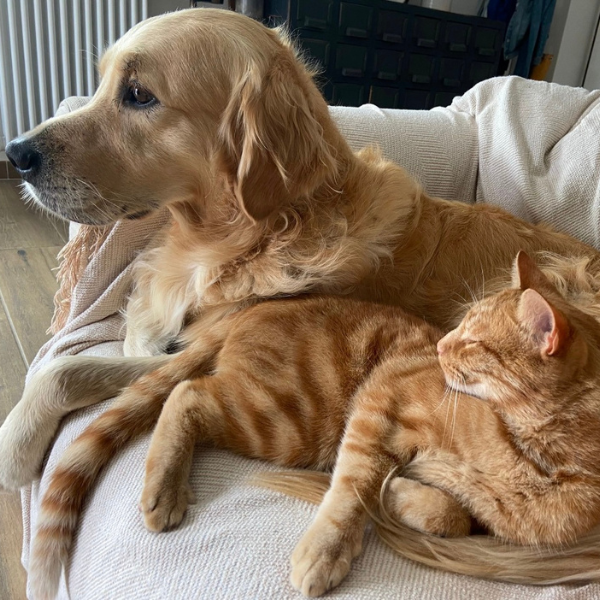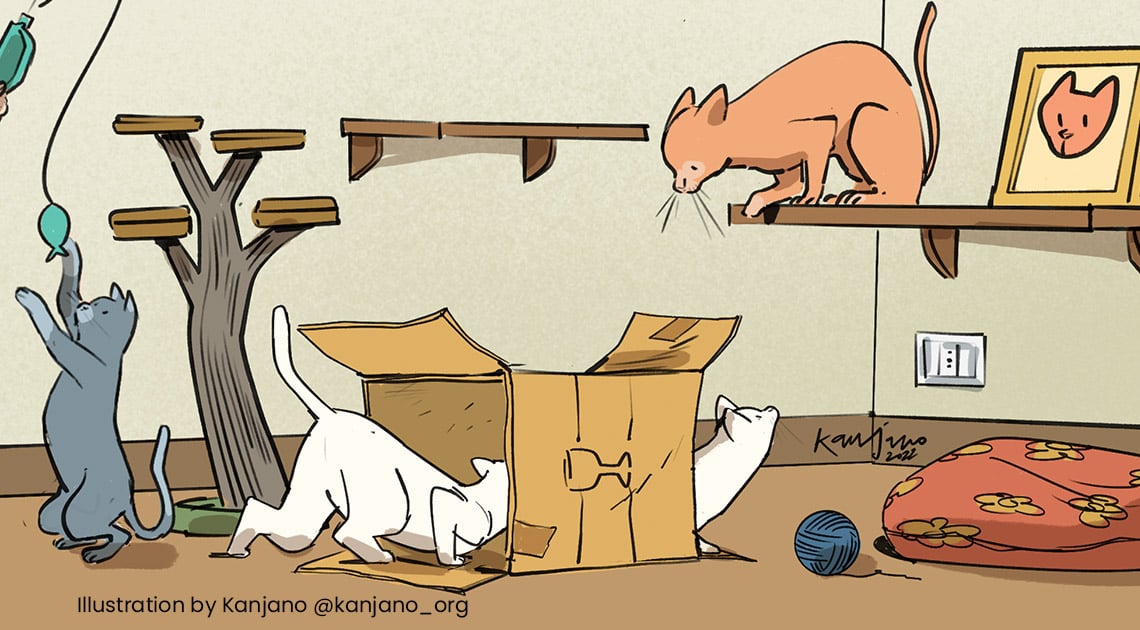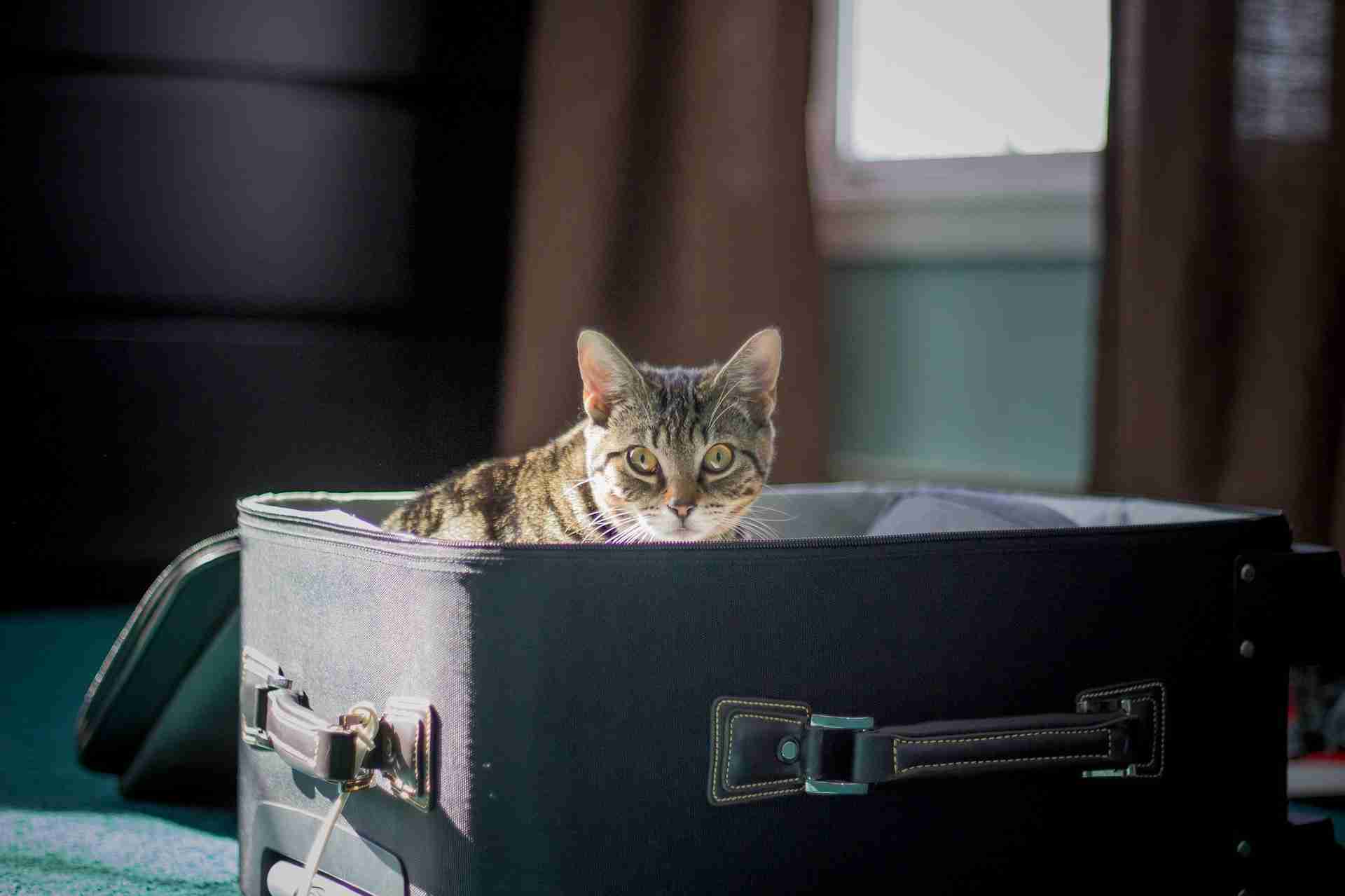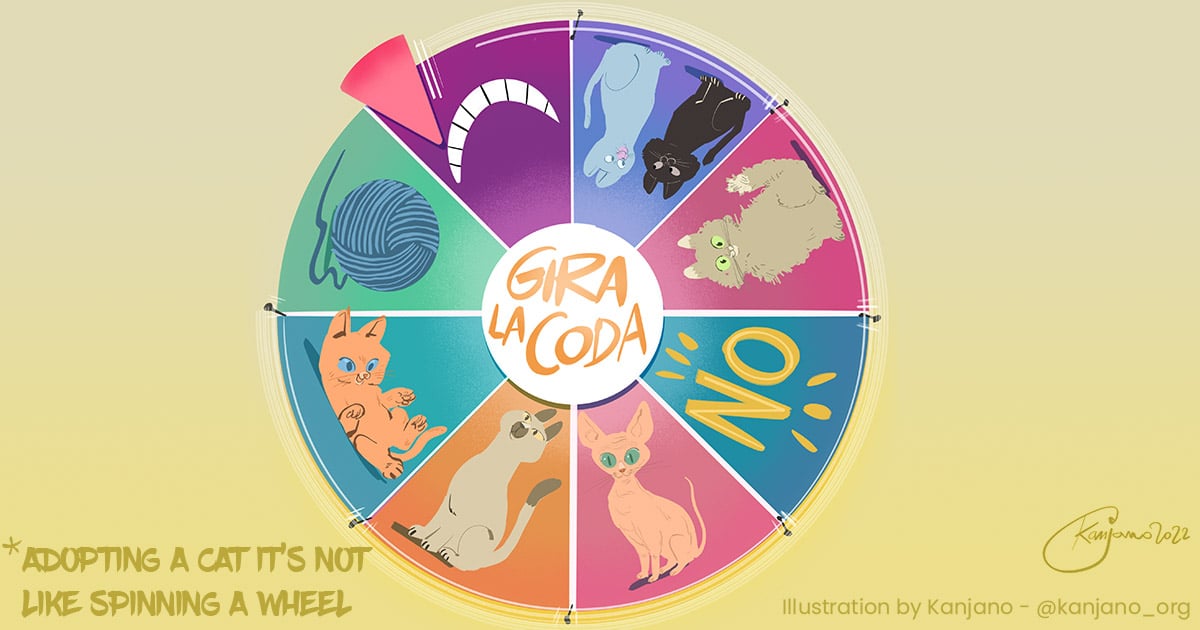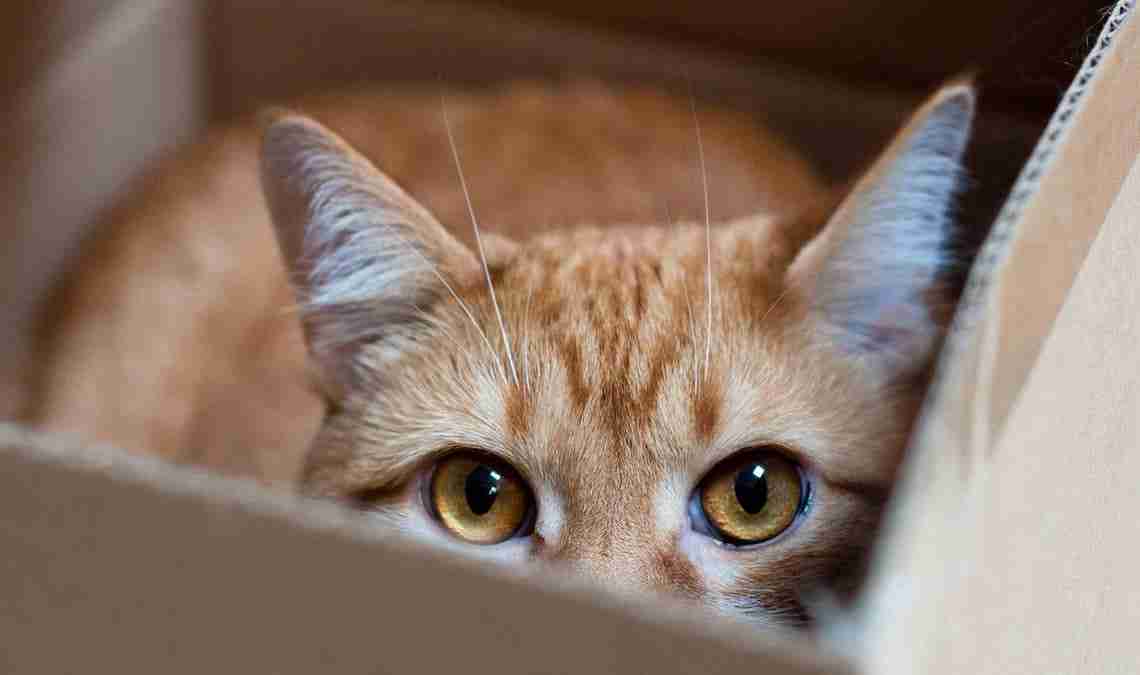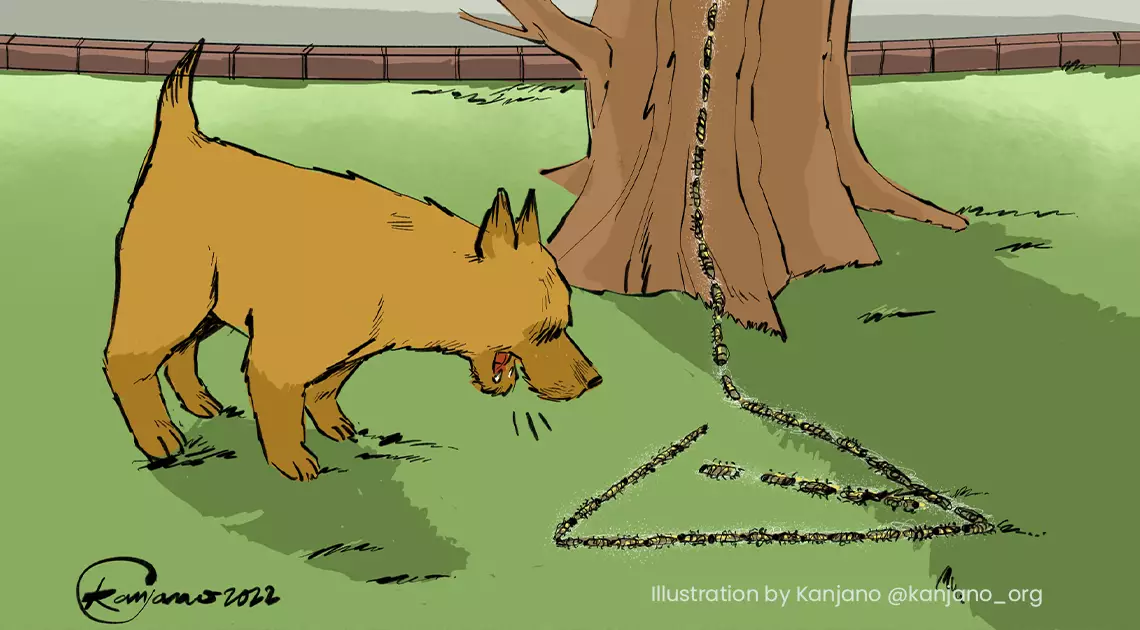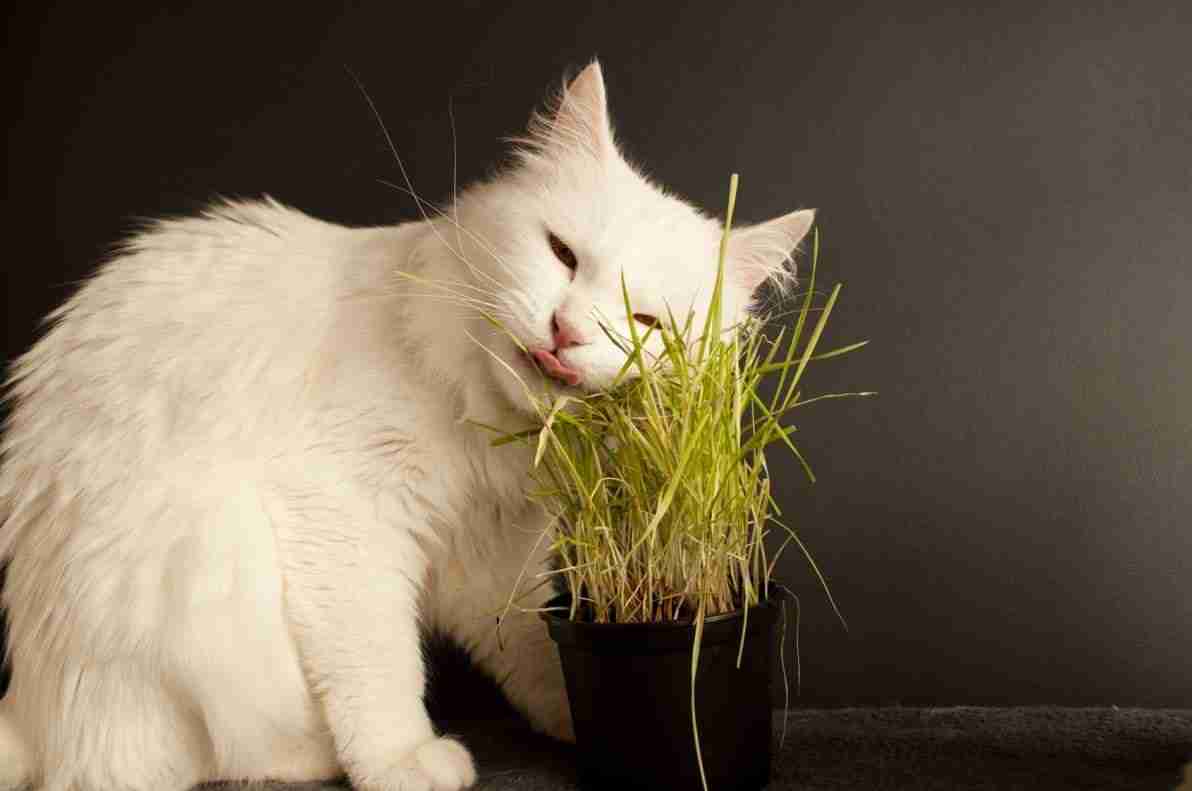How to improve your relationship with your cat
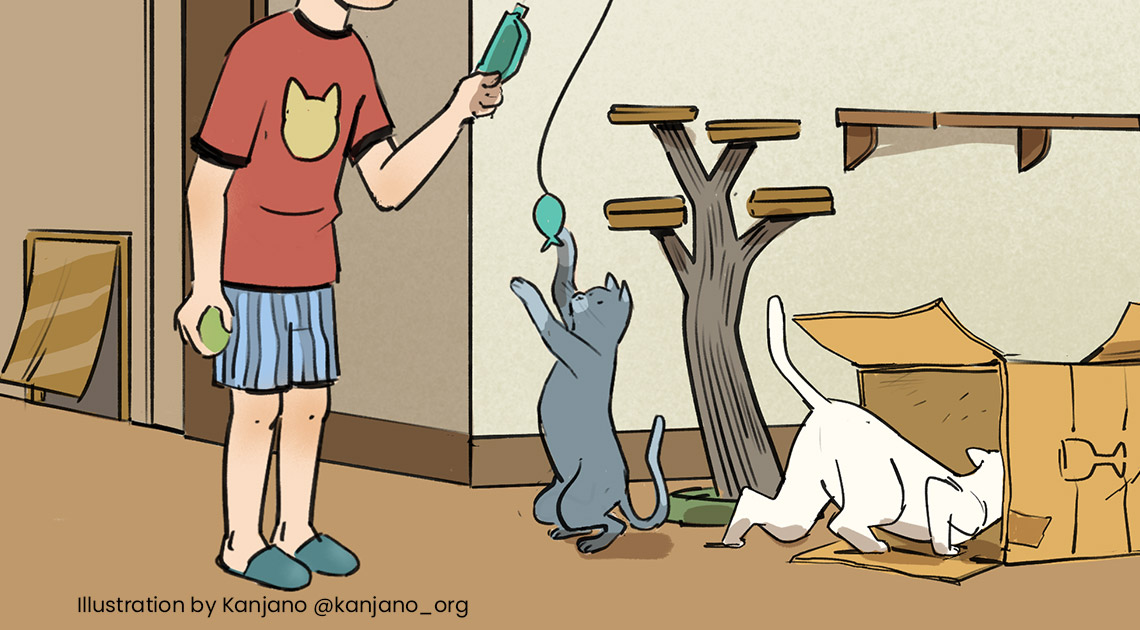
By Sonia Campa
Your cat's social welfare
In the editorial where I dealt with the theme of creating spaces (internal and external) for your cat in the home, I also stressed how important it is to take care of its physical environment. This is an aspect that can never be stressed enough: there can be no relationship built with a cat if first it is not guaranteed an environment it can enjoy that meets the minimum requirements for its well-being. Too often we believe love is enough, but this is an oversimplification best for a number-one romance novel, not for a complex animal like the cat.
On the other hand, well-being is not only measured in terms of the distribution of resources useful to it or of the improvements made available. The quality of its life also depends on its social relationships.
The importance of the relationship
And here, too, I would like to highlight the point: the more a cat lives confined within an apartment, and prevented, that is, from coming into contact with the world in all its variety, the more it counts on the presence of the individuals it lives with and the more vital an articulated relationship becomes. This is because when a cat is isolated from the world, human references are its only interface able to offer variability and the unexpected, inserting dynamics into its day that motivate it and interest it in its surroundings.
A relationship means play (a lot), companionship, curiosity, surprise, laughter but also calm and relaxation.
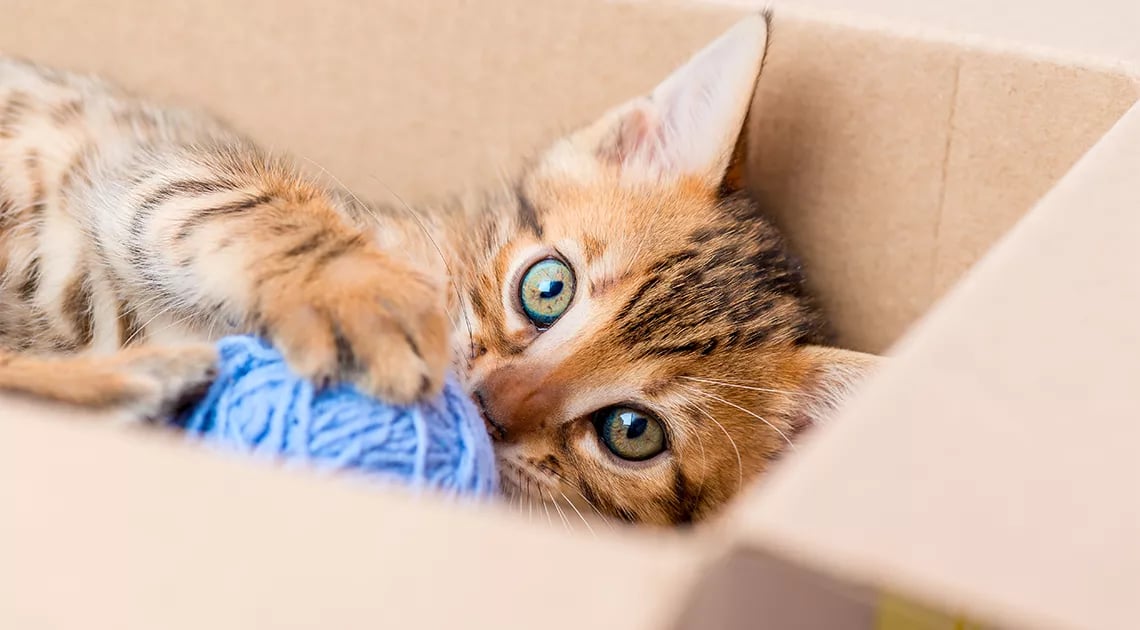
Predatory games
One activity that should never be lacking is predatory play. If on the one hand it is not advisable (or indeed, forbidden!) to encourage a cat to play with our hands and feet, it is possible to present it with ropes, balls, fishing rods with a fake prey tied to the hook, stuffed mice, nut shells, pasta leftovers, anything that comes to mind allowing it to express its hunting talent. Do not think, however, that a cat can always entertain itself alone: it likes to grab what moves unpredictably and way. So it is up to us to animate the toy, and try to mimic the behavior of a real prey!
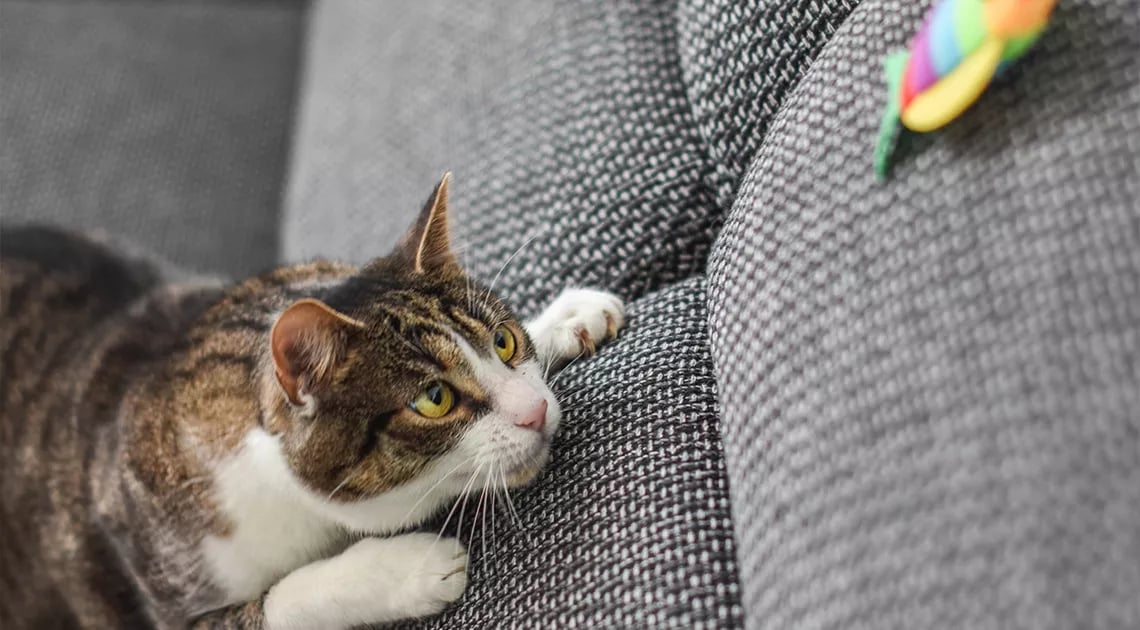
Games of skill
The cat loves to entertain itself even with solitary games played on its own. To allow it to do this, your cat needs toys that are always available in its environment, that are renewed regularly to avoid habituation. Even the so-called "intelligence" games can be valid ways to engage cats actively: toys with snacks hidden inside them that the cat must be able to get out with its paws or mouth.
Offer the choice of contact
The way we communicate and interact on a daily basis also determines the climate of our relationship and the degree of trust that the cat can place in us; a trust that we show we deserve whenever we allow it to decide if, when and how much to interact. Due to their ethological characteristic, cats need to be able to manage interactions. For some people, this directive is difficult to digest. They claim they cannot resist touching or stroking a cat. But the difficulty of resisting one’s impulses is more typical of children, not adults: taking responsibility for the well-being of a cat also means knowing how to recognize where our gratification ends and the needs of others begin.

The gentle caress
It is not only the frequency but also the way we caress our cat that counts. Cats love discreet, light, slightly prolonged touches that maybe involve the head area and little else. Undoubtedly, there are cats that tolerate being touched everywhere on their body, including their belly. But, again, if our friend shows it doesn’t like the attention in certain areas, the last thing to do is to challenge its patience and force it to tolerate us.
Shared relaxation
Do not forget that cats also love to relax, laze, and let go with us. Dedicate moments of shared relaxation every day, as long as it is your cat that joins you, that wants some pampering and a moment of tranquility, and not the other way round.
Respect its world of smells
Cats live in a world of smells, and sometimes even giving your house a lick of paint can destabilize it. It would be better to avoid intrusive and artificial scents. So wash your hands as soon as you are back in the house if you have come into contact with other animals, discard aggressive household detergents, and keep from washing its personal bed every week–the one that reassures it so much.
Punishment is banned!
No spanking on its back, no hitting its muzzle, no index finger raised while you fix it in the eyes exclaiming a peremptory "no!" No blowing in its face, no isolation for 10 minutes in a closed room. Forget all that. Not only are punishments totally ineffective at teaching a cat anything but, in a short time, they also undermine the trust it puts in us. And a cat who has lost its trust is more likely to feel stress and get ill, as well as to become more prone to confrontational and aggressive responses.
Punishment should be abolished definitively from any cat lover's vocabulary, leaving space, instead, for "facilitation" towards the alternative.

Rather than force, facilitate
If you want to teach a cat something, the very first question to ask yourself is who needs it. Is it for the cat or for you? And if it serves you, is it reasonable? How realistic is it to demand a certain response from your cat? If you are sure that what you are looking for is acceptable and compatible with its characteristics and needs, rather than focusing on vague reinforcements and punishments, try to understand how to facilitate the spontaneous expression of the behavior you would like, offering a viable alternative.
The secret is the alternative
If, for example, you would prefer your cat to stop sitting on the table while you eat, you might see that it is only interested in your company. So why not offer a tempting alternative such as a cozy cushion on a chair next to you or a scratching post near the table, inviting him to reach this new location before you put the dishes on the table and complimenting him all the while he stays there? If his only interest is really to connect to you and share the moment, it won’t take long to understand that when he is in the "right" position, he will get exactly what he wants.
I would like to stress that these are general guidelines with no pretence of being exhaustive. The relationship with cats is multifaceted and full of singular implications, but the point is that it must be cultivated daily, with affection, the due dose of respect, a suitable environment and, why not, a pinch of imagination.
Related Articles
Other Editorials by Sonia Campa

